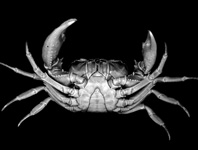Abstract
The species Melanotettix dibelonius Bruner, 1904 was previously recorded from Michoacán and Guerrero states in Mexico. This species is characterized by its tegmina, which are always shorter than head and pronotum together and sometimes shorter than the pronotum. After recent field expeditions (2015-2019) and an extensive review of museum specimens from the most important Orthoptera collections in Mexico and USA (291 specimens), we discovered a long-winged form of this species south of its previous known range, which effectively expanded its distribution range into Oaxaca state. We discuss some aspects regarding the patterns of geographic distribution and morphological variation among the long-winged and short-winged morphs. We conduct statistical analyses and observed that on average, the tegmina of long-winged individuals (both females and males) are slightly longer than twice the length of pronotum; whereas in short-winged individuals the tegmina are nearly as long or slightly longer than the length of the pronotum. Moreover, on average, females appear to have longer tegmina than males in both morphotypes. We provide photographic records of both forms live and mounted, the most comprehensive distribution map to date and a discussion of evolutionarily interesting patterns found in this species.
References
Arcangeli, J., Light, J.E. & Cervantes, F.A. (2019) Molecular and morphological evidence of the diversification in the gray mouse opossum, Tlacuatzin canescens (Didelphimorphia), with description of a new species. Journal of Mammalogy, 99 (1), 138–158.
https://doi.org/10.1093/jmammal/gyx173
Bruner, L. (1904) The Acrididae. In: Godman, F.D. & Salvin, O. (Eds.), Biologia Centrali-Americana. Insecta Orthoptera. Vol. 2. R.H. Porter, London, pp. 19–342.
https://doi.org/10.5962/bhl.title.730
Cigliano, M.M., Braun, H., Eades, D.C. & Otte, D. (2020) Orthoptera Species File (Version 5.0/5.0.).
Available from: http://Orthoptera.SpeciesFile.org (accessed 2 February 2020)
Denno, R.F., Hawthorne, D.J., Thorne, B.L. & Gratton, C. (2001) Reduced flight capability in British Virgin Island populations of a wing-dimorphic insect: the role of habitat isolation, persistence, and structure. Ecological entomology, 26 (1), 25–36.
https://doi.org/10.1046/j.1365-2311.2001.00293.x
Devitt, T. J. (2006) Phylogeography of the Western Lyresnake (Trimorphodon biscutatus): testing aridland biogeographical hypotheses across the Nearctic-Neotropical transition. Molecular Ecology, 15 (14), 4387–4407.
https://doi.org/10.1111/j.1365-294X.2006.03015.x
Jago, N.D. (1971) A review of the Gomphocerinae of the world with a key to the genera (Orthoptera, Acrididae). Proceedings of the Academy of Natural Sciences of Philadelphia, 123, 205–343.
König, S. & Krauss, J. (2019) Get larger or grow longer wings? Impacts of habitat area and habitat amount on orthopteran assemblages and populations in semi-natural grasslands. Landscape Ecology, 34, 175–186.
https://doi.org/10.1007/s10980-018-0762-5
Massa, B., Fontana, P., Buzzetti, F., Kleukers, R. & Odé, B. (2012) Fauna d’Italia XLVIII. Orthoptera. Calderini, Bologna, 563 pp.
Otte, D. (1979) Biogeographic patterns in flight capacity of Neartic grasshoppers (Orthoptera: Acrididae). Entomological News, 90 (4), 153–158.
Otte, D. (1981) The North American Grasshoppers Volume I Acrididae: Gomphocerinae and Acridinae. Harvard University Press, Cambridge, Massachusetts, 275 pp.
Pringle, E.G., Ram, S.R., Rez, I., Bonebrake, T.C., Ramírez, S.R., Gordon, D.M. & Dirzo, R. (2012) Diversification and phylogeographic structure in widespread Azteca plant-ants from the northern Neotropics. Molecular Ecology, 21 (14), 3576–3592.
https://doi.org/10.1111/j.1365-294X.2012.05618.x
Roff, D.A. (1986) The evolution of wing dimorphism in insects. Evolution, 40 (5), 1009–1020.
https://doi.org/10.1111/j.1558-5646.1986.tb00568.x
Roff, D.A. (1994) The evolution of flightlessness: is history important? Evolutionary Ecology, 8, 639–657.
https://doi.org/10.1007/BF01237847
Roff, D.A. (1990) The evolution of flightlessness in insects. Ecological Monographs, 60 (4), 389–421.
https://doi.org/10.2307/1943013
Rowell, C.H.F. (2013) The Grasshoppers (Caelifera) of Costa Rica and Panama. The Orthopterists’ Society, Champaign, Illinois, 611 pp.
Sanabria-Urbán, S., Song, H., Oyama, K., González-Rodríguez, A., Serrano-Meneses, M.A. & Cueva del Castillo, R. (2015) Body size adaptations to altitudinal climatic variation in neotropical grasshoppers of the genus Sphenarium (Orthoptera: Pyrgomorphidae). PlosOne, 11 (2), e0145248, 1–12.
https://doi.org/10.1371/journal.pone.0145248
Sanabria-Urbán, S., Song, H., Oyama, K., González-Rodríguez, A. & Cueva del Castillo, R. (2017) Integrative taxonomy reveals cryptic diversity in neotropical grasshoppers: Taxonomy, phylogenetics, and evolution of the genus Sphenarium Charpentier, 1842 (Orthoptera: Pyrgomorphidae). Zootaxa, 4274 (1), 1–186.
https://doi.org/10.11646/zootaxa.4274.1.1
Whitman, D.W. (2008) The significance of body size in the Orthoptera: a review. Journal of Orthoptera Research, 17 (2), 117–134.
https://doi.org/10.1665/1082-6467-17.2.117


